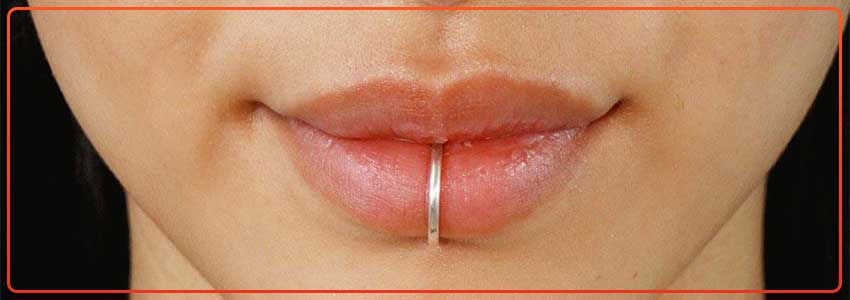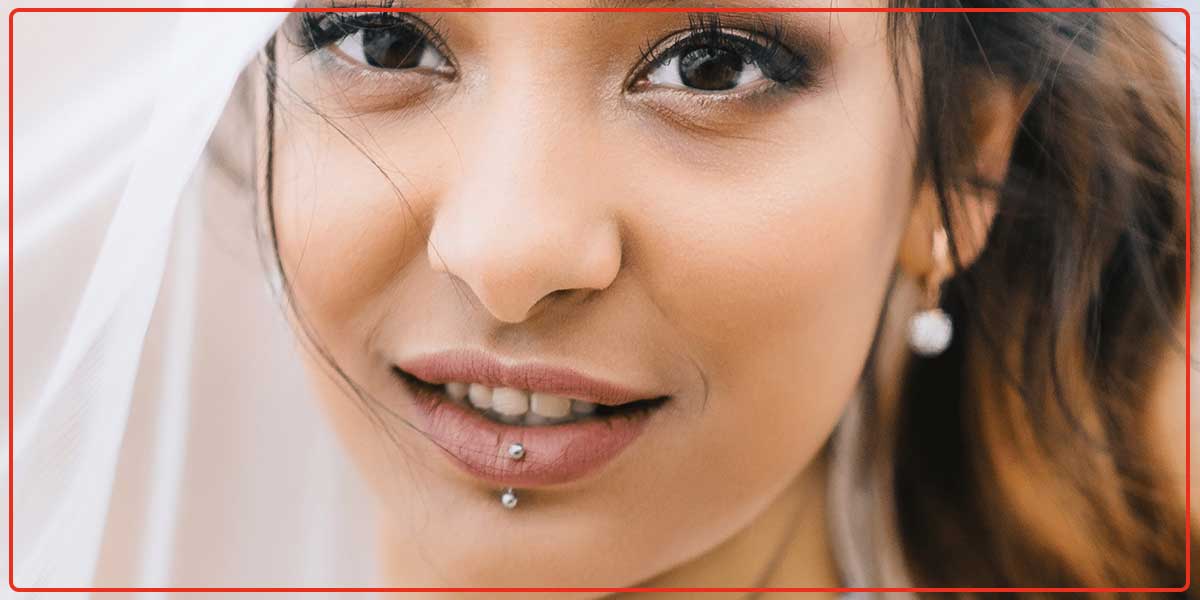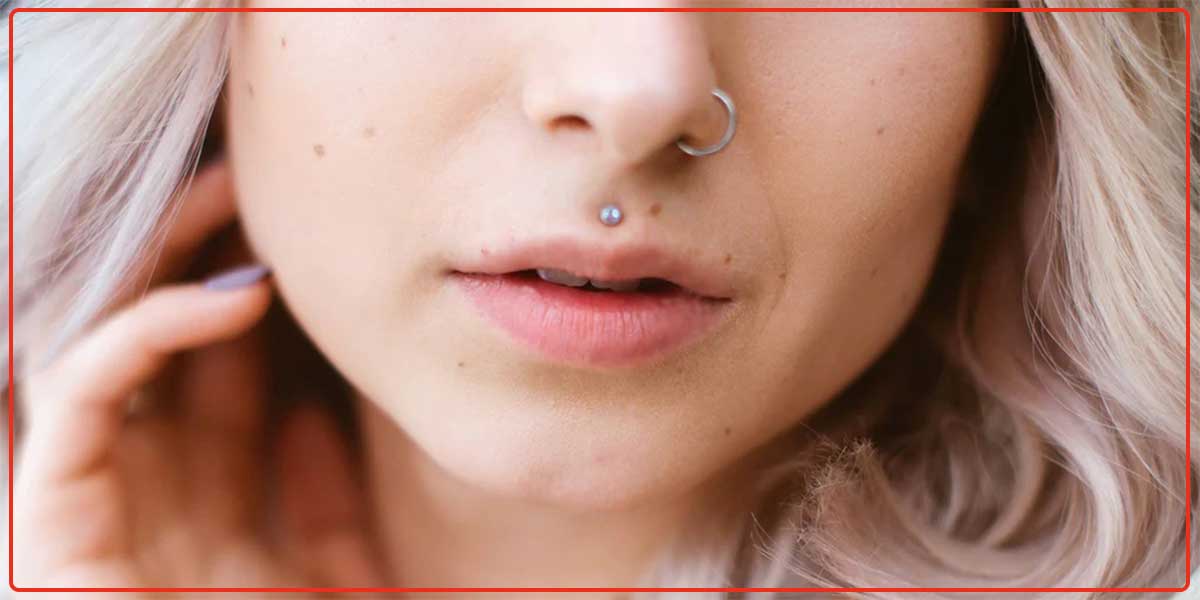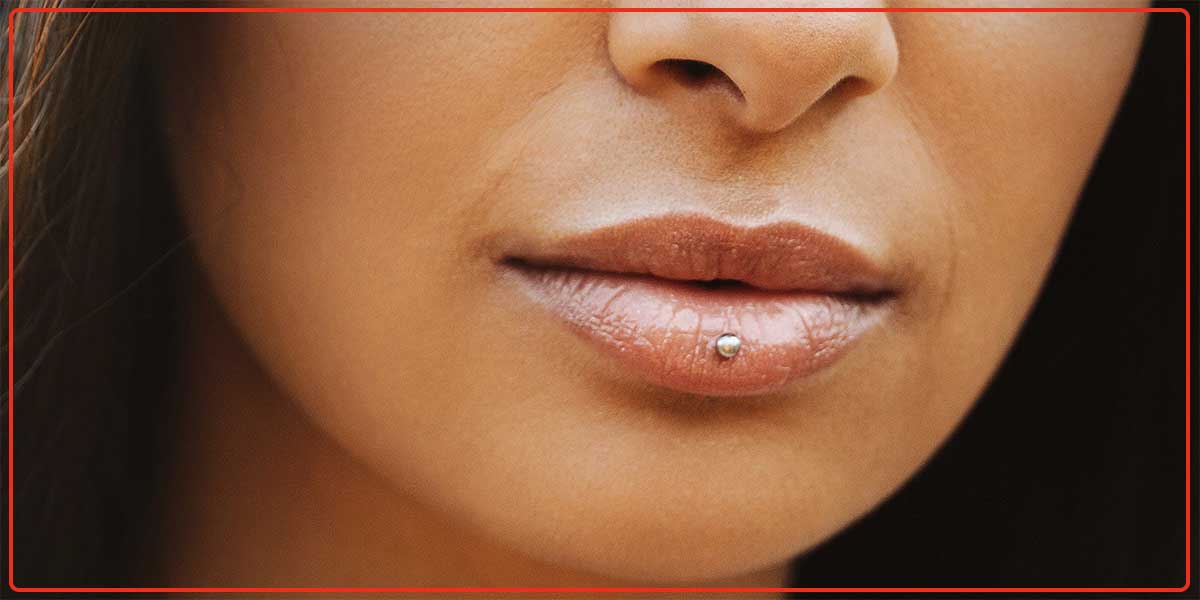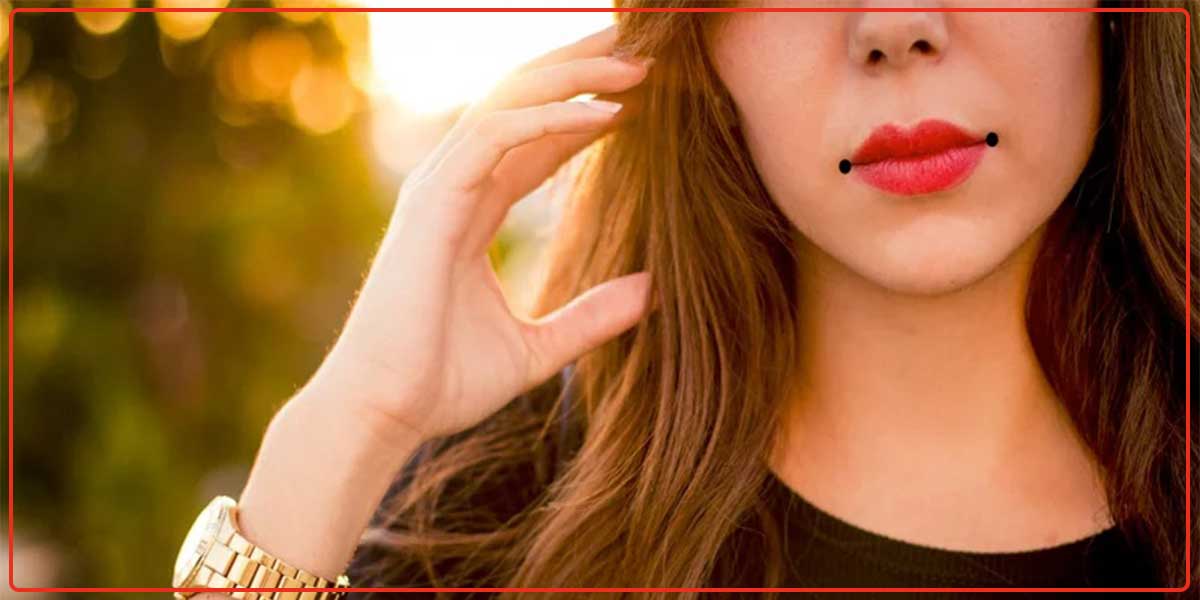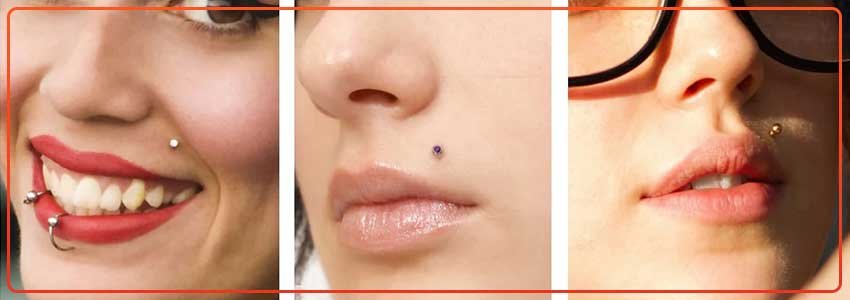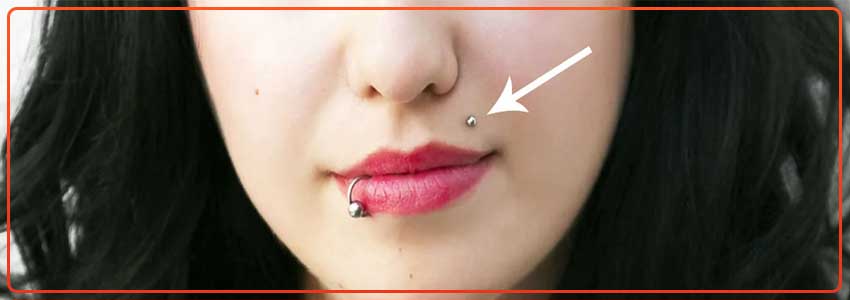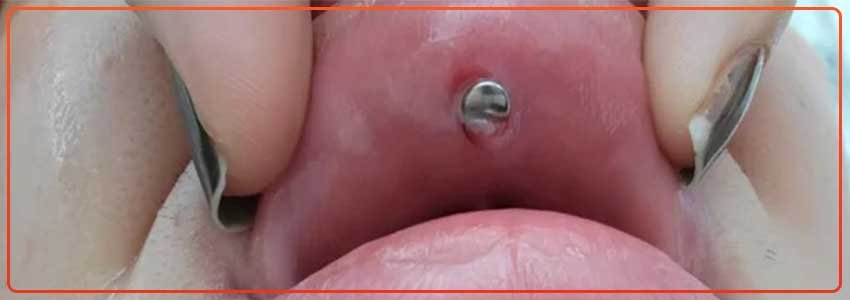Lip piercing has become increasingly popular in recent years as a form of body modification. This type of piercing involves puncturing or cutting the lip to insert jewelry, which can range from small studs to larger hoops and spikes. While lip piercing is not a new trend, it has gained more mainstream acceptance in recent years, particularly among younger generations.
But what exactly is lip piercing, and what should you know before getting one? In this post, we’ll explore the ins and outs of lip piercing, from the different types of jewelry to the healing process and aftercare tips. So whether you’re considering getting a lip piercing or simply curious about this popular form of body modification, keep reading to learn more.
History of Lip Piercing
Lip piercing is not a new trend. In fact, it has been around for centuries, dating back to ancient cultures such as the Egyptians, Africans, and Mayans. For example, the ancient Maya of Central America practiced lip piercing as part of their religious rituals, believing it was a way to communicate with the gods.
Throughout history, lip piercing has also been used as a sign of wealth and status. In some African tribes, lip plates were inserted into stretched lip piercings, serving as a symbol of beauty and social rank.
In modern times, lip piercing has become more mainstream and is seen as a form of self-expression and fashion. Many people choose to get a lip piercing as a way to stand out or make a statement. Lip piercing has even been embraced by some celebrities, including Madonna and Miley Cyrus.
Today, there are many different types of lip piercings to choose from, each with its own unique style and placement. From traditional lip piercings to more unconventional ones like the snake bite or the labret piercing, there is something for everyone when it comes to lip piercing.
Also Read: Frowny Piercing: A Comprehensive Guide
Types of Lip Piercings
When it comes to lip piercings, there are many different types to choose from. Each type of lip piercing has its own unique style and placement, and it’s important to choose the one that best suits your personality and preferences. Here are some of the most popular types of lip piercings:
Monroe Piercing:
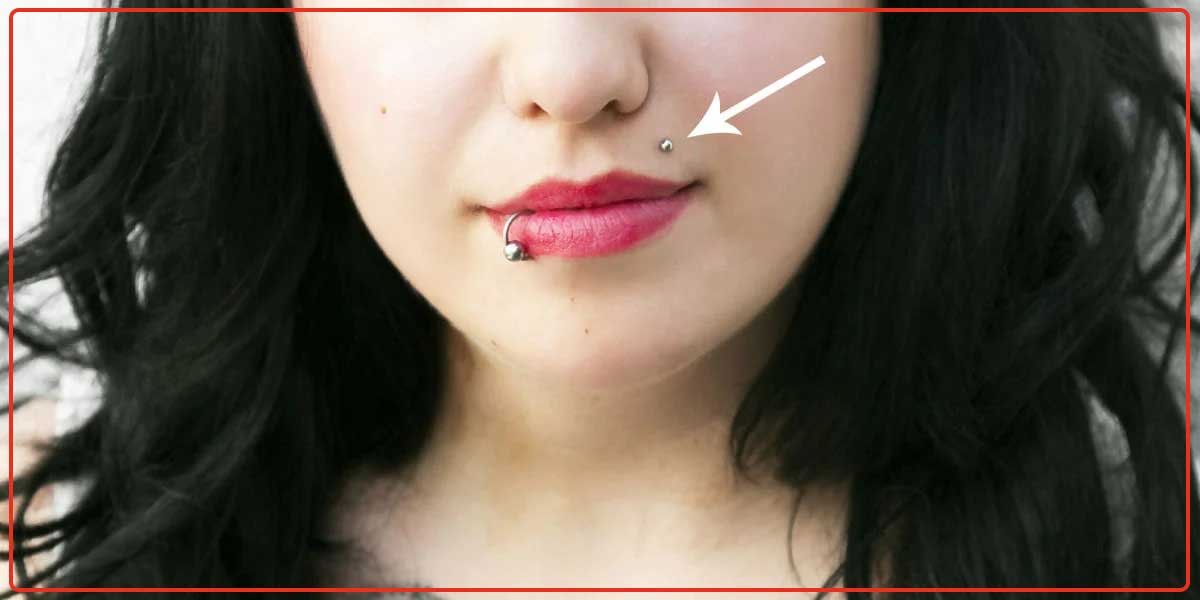 This piercing is named after Marilyn Monroe, who had a small mole on her upper lip. The Monroe piercing is placed on the left or right side of the upper lip, and a small stud is inserted.
This piercing is named after Marilyn Monroe, who had a small mole on her upper lip. The Monroe piercing is placed on the left or right side of the upper lip, and a small stud is inserted.
Labret Piercing:
The labret piercing is one of the most popular types of lip piercings. It is placed in the center of the lower lip, and a stud or hoop is inserted. Depending on the placement, this piercing can also be referred to as a lowbret or high labret.
Medusa Piercing:
This piercing is placed in the center of the upper lip, just above the philtrum (the indentation between the nose and upper lip). It is often paired with a stud or a small ball.
Vertical Labret Piercing:
The vertical labret piercing is a variation of the traditional labret piercing. It is placed below the center of the lower lip and exits through the top of the lower lip. A curved barbell or a hoop can be used for this piercing.
Ashley Piercing:
This piercing is a combination of a labret and a vertical labret piercing. It is placed in the center of the lower lip, but the jewelry exits through the upper lip.
Dahlia Piercing:
The dahlia piercing is placed at the corners of the mouth, often paired with a curved barbell or a hoop. This piercing can create the illusion of a smile or frown.
These are just a few of the many types of lip piercings available. Before getting a lip piercing, it’s important to research the different types and choose the one that best suits your style and comfort level.
Pros and Cons of Lip Piercing
Like any form of body modification, lip piercing has its pros and cons. Here are some of the advantages and disadvantages to consider before getting a lip piercing:
Pros:
- Aesthetic Appeal: Lip piercing can be a great way to enhance your appearance and add some extra flair to your overall look. With so many different types of lip piercings and jewelry to choose from, you can find a style that perfectly suits your personal taste.
- Self-Expression: For many people, lip piercing is a form of self-expression and a way to show off their unique style and personality. It can be a powerful way to communicate who you are and what you stand for.
- Versatility: With so many different types of lip piercings, you can switch up your look whenever you like. Whether you want to wear a subtle stud or a bold hoop, there are endless possibilities to explore.
Cons:
- Pain and Discomfort: Like any type of piercing, lip piercing can be painful and uncomfortable. The actual piercing process can be quite intense, and the healing process can be long and uncomfortable.
- Risk of Infection: Lip piercing carries a risk of infection, especially if proper aftercare is not followed. Infection can cause pain, swelling, and other complications, and may require medical treatment.
- Difficulty Eating and Drinking: Depending on the placement of your lip piercing, eating and drinking may be difficult at first. You may need to avoid certain foods and drinks or modify your eating habits until the piercing has fully healed.
These are just a few of the pros and cons of lip piercing to consider before making your decision. Ultimately, the decision to get a lip piercing is a personal one that should be based on your own preferences and comfort level. If you do decide to get a lip piercing, be sure to choose a reputable piercer and follow proper aftercare guidelines to minimize the risk of complications.
Lip Piercing Aftercare
After getting a lip piercing, proper aftercare is crucial to ensure proper healing and to minimize the risk of infection. Here are some tips for lip piercing aftercare:
Cleaning and Maintenance
In the first few weeks after getting a lip piercing, it’s important to clean the area regularly to prevent infection. Use a saline solution or a gentle soap and warm water to clean the piercing at least twice a day. Be sure to wash your hands before touching the piercing and avoid using harsh chemicals or alcohol-based products.
Avoiding Certain Activities
During the healing process, it’s important to avoid certain activities that can irritate or damage the piercing. This includes kissing, smoking, drinking alcohol, and playing with the jewelry. You should also avoid swimming or soaking the piercing in water until it has fully healed.
Signs of Infection and When to Seek Medical Attention
Watch for signs of infection, such as redness, swelling, pus, or excessive pain or bleeding. If you notice any of these symptoms, seek medical attention immediately. In some cases, you may need to remove the jewelry or take antibiotics to treat the infection.
By following these aftercare tips, you can help ensure that your lip piercing heals properly and looks great for years to come. Remember, it’s important to be patient during the healing process and to give your piercing the time and attention it needs to fully heal. With proper care, you can enjoy your new lip piercing for many years to come.
Lip Piercing Jewelry
Choosing the right jewelry for your lip piercing is an important part of the process. Here are some things to consider when selecting lip piercing jewelry:
- Materials: The material you choose for your lip piercing jewelry is important for both safety and aesthetics. Some of the most popular materials for lip jewelry include surgical steel, titanium, gold, and bioplast. Avoid using cheap or low-quality materials, which can cause allergic reactions or other complications.
- Styles: There are many different styles of lip piercing jewelry to choose from, depending on your personal taste and the type of piercing you have. Some common styles include studs, hoops, rings, and captive bead rings. You can also choose from a variety of decorative elements, such as gems, spikes, and barbells.
- Placement: The placement of your lip piercing will also impact the type of jewelry you can use. For example, a labret piercing typically requires a flat-back stud or a barbell, while a Monroe piercing typically uses a small, round stud. Talk to your piercer about the best type of jewelry for your specific piercing.
When selecting lip piercing jewelry, it’s important to choose high-quality materials that are safe for your body and won’t cause allergic reactions or other complications.
You should also consider the style and placement of your piercing to ensure that you choose the right type of jewelry for your needs. With so many options to choose from, you’re sure to find a style that suits your personal taste and helps you show off your unique sense of style.
Conclusion
In conclusion, lip piercing is a popular form of self-expression and fashion that has been around for centuries. Whether you’re interested in a Monroe piercing, a labret piercing, or another type of lip piercing, it’s important to consider the pros and cons before making a decision. Some of the key points to keep in mind include the potential aesthetic appeal, the versatility of different piercing styles, and the risks associated with pain, discomfort, and infection.
If you do decide to get a lip piercing, it’s crucial to take proper care of the piercing during the healing process. This includes cleaning and maintenance, avoiding certain activities, and watching for signs of infection. It’s also important to choose high-quality jewelry that’s safe for your body and won’t cause allergic reactions or other complications.
At the end of the day, lip piercing can be a great way to express your individuality and show off your personal style. With proper care and attention, you can enjoy your new piercing for many years to come. Just remember to consider the risks and benefits carefully before making a decision, and to work with a professional piercer who can help guide you through the process.
FAQS
How long does a lip piercing take to heal?
The healing time for a lip piercing can vary depending on the type of piercing and individual factors like age, health, and aftercare. On average, lip piercings can take anywhere from 6-12 weeks to heal, though some may take longer.
How painful is a lip piercing?
Pain tolerance varies from person to person, but generally, a lip piercing is considered to be a moderately painful piercing. However, the actual pain level can depend on factors like the location of the piercing and the individual’s pain threshold.
What can I eat after getting a lip piercing?
In the first few days after getting a lip piercing, it’s best to stick to soft, easy-to-chew foods like soup, smoothies, and yogurt. You should avoid hot or spicy foods, crunchy foods, and anything that requires a lot of chewing.
Can I change my lip piercing jewelry right away?
It’s generally not recommended to change your lip piercing jewelry right away. Your piercer will advise you on how long to wait before changing the jewelry, but it’s typically at least several weeks to allow for proper healing.
What are the signs of a lip piercing infection?
Signs of a lip piercing infection can include redness, swelling, pain, discharge, and a fever. If you notice any of these symptoms, it’s important to seek medical attention right away to prevent further complications.
Can I swim with a lip piercing?
It’s generally recommended to avoid swimming in pools, lakes, or oceans for at least the first few weeks after getting a lip piercing. This is because water can contain bacteria and other contaminants that can increase the risk of infection.
Will a lip piercing affect my speech?
In the first few days or weeks after getting a lip piercing, you may experience some difficulty speaking clearly or pronouncing certain sounds. However, with practice and patience, most people find that their speech returns to normal fairly quickly.
Can I kiss someone with a lip piercing?
It’s generally safe to kiss someone with a lip piercing, but it’s important to be gentle and avoid any rough or aggressive movements that could cause pain or damage to the piercing. It’s also a good idea to avoid kissing someone who has a cold sore or other mouth infection, as this can increase the risk of infection for both parties.
Will a lip piercing leave a scar?
Like any piercing, a lip piercing can potentially leave a scar once it’s removed. However, with proper aftercare and attention, many people find that their scars are minimal or barely noticeable.
Can I wear makeup with a lip piercing?
Yes, you can still wear makeup with a lip piercing. However, you should avoid using any products that could irritate or damage the piercing, such as harsh lipsticks or lip glosses.
How do I know if a lip piercing is right for me?
Ultimately, the decision to get a lip piercing is a personal one that should be based on your own preferences and desires. It’s a good idea to do your research, talk to a professional piercer, and consider the potential risks and benefits before making a decision.
